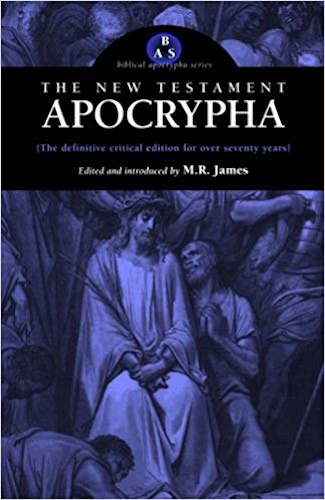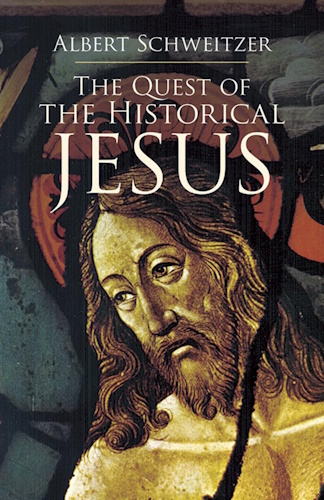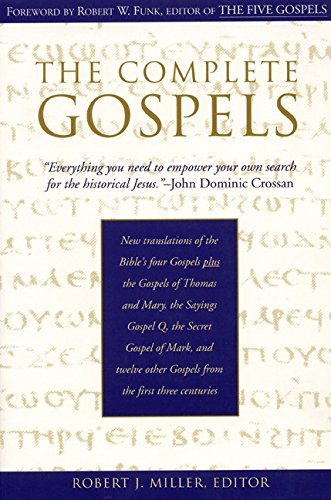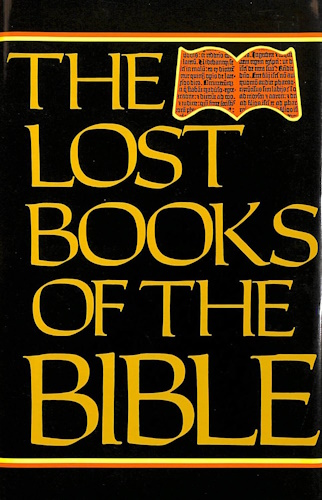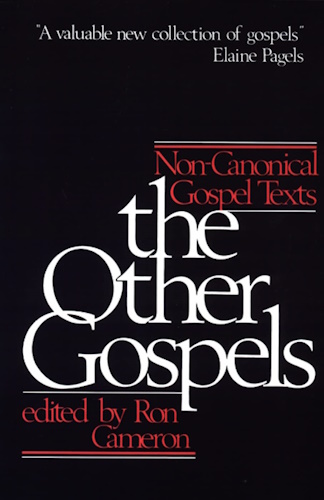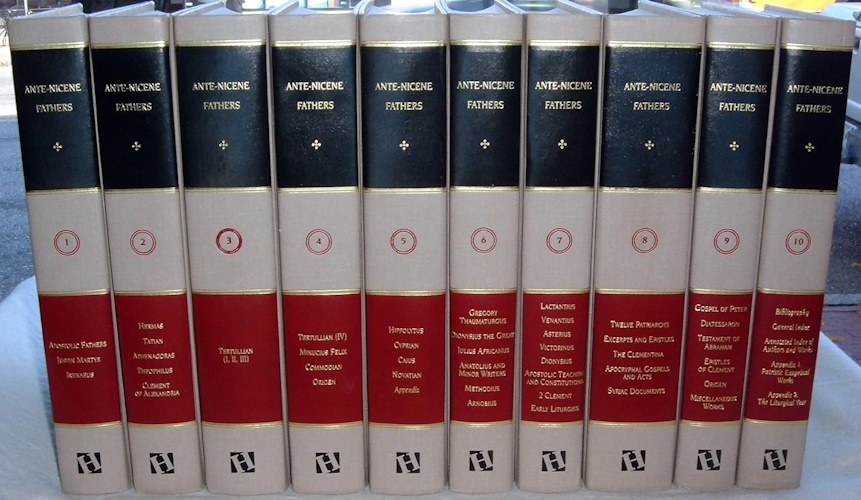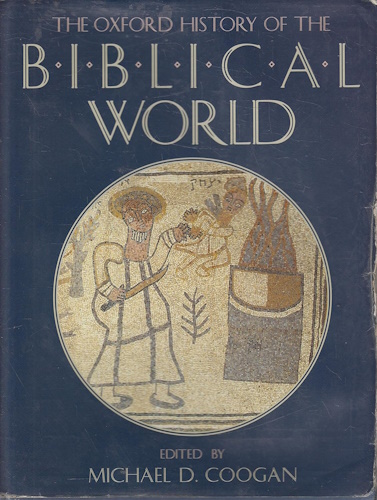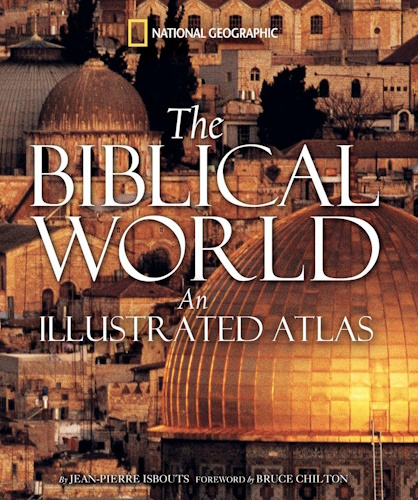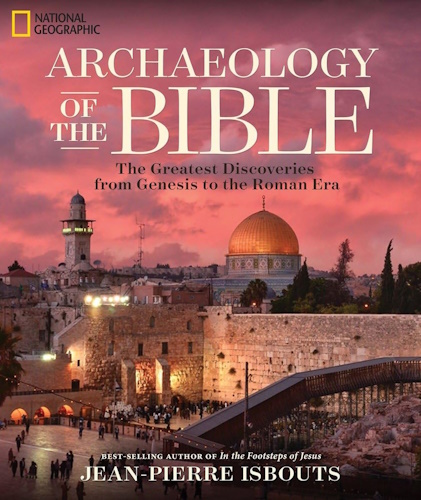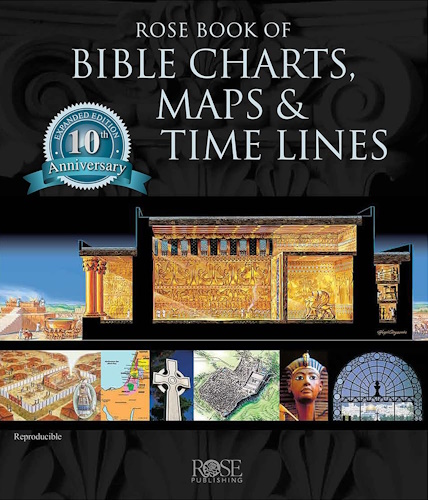
The Gospel of the Nativity of Mary
Translator’s Introductory Notice.
Gospel of the Nativity of Mary. — This work, which is in substance the same as the earlier part of the preceding, yet differs from it in several important points, indicating a later date and a different author. It has acquired great celebrity from having been transferred almost entire to the Historia Lombardica or Legenda Aurea in the end of the thirteenth century. Mediæval poetry and sacred art have been very much indebted to its pages.
The original is in Latin, and is not a direct translation from the Greek. In many passages it follows very closely the Vulgate translation.
CHAP. 1.—The blessed and glorious ever-virgin Mary, sprung from the royal stock and family of David, born in the city of Nazareth, was brought up at Jerusalem in the temple of the Lord. Her father was named Joachim, and her mother Anna. Her father's house was from Galilee and the city of Nazareth, but her mother's family from Bethlehem. Their life was guileless and right before the Lord, and irreproachable and pious before men. For they divided all their substance into three parts. One part they spent upon the temple and the temple servants; another they distributed to strangers and the poor; the third they reserved, for themselves and the necessities of their family. Thus, dear to God, kind to men, for about twenty years they lived in their own house, a chaste married life, without having any children. Nevertheless they vowed that, should the Lord happen to give them offspring, they would deliver it to the service of the Lord; on which account also they used to visit the temple of the Lord at each of the feasts during the year.
CHAP. 2.—And it came to pass that the festival of the dedication[1] was at hand; wherefore also Joachim went up to Jerusalem with some men of his own tribe. Now at that time Issachar[2] was high priest there. And when he saw Joachim with his offering among his other fellow-citizens, he despised him, and spurned his gifts, asking why he, who had no offspring, presumed to stand among those who had; saying that his gifts could not by any means be acceptable to God, since He had deemed him unworthy of off-spring: for the Scripture said, Cursed is every one who has not begot a male or a female in Israel.[3] He said, therefore, that he ought first to be freed from this curse by the begetting of children; and then, and then only, that be should come into the presence of the Lord with his offerings. And Joachim, covered with shame from this reproach that was thrown in his teeth, retired to the shepherds, who were in their pastures with their flocks; nor would he return home, test perchance he might be branded with the same reproach by those of his own tribe, who were there at the time, and had heard this from the priest.
CHAP. 3.—Now, when he had been there for some time, on a certain day when he was alone, an angel of the Lord stood by him in a great light. And when he was disturbed at his appearance, the angel who had appeared to him restrained his fear, saying: Fear not, Joachim, nor be disturbed by my appearance; for I am the angel of the Lord, sent by Him to thee to tell thee that thy prayers have been heard, and that thy charitable deeds have gone up into His presence.[4] For He hath seen thy shame, and hath heard the reproach of unfruitfulness which has been unjustly brought against thee. For God is the avenger of sin, not of nature: and, therefore, when He shuts up the womb of any one, He does so that He may miraculously open it again; so that that which is born may be acknowledged to be not of lust, but of the gift of God. For was it not the case that the first mother of your nation—Sarah—was barren up to her eightieth year?[5] And, nevertheless, in extreme old age she brought forth Isaac, to whom the promise was renewed of the blessing of all nations. Rachel also, so favoured of the Lord, and so beloved by holy Jacob, was long barren; and yet she brought forth Joseph, who was not only the lord of Egypt, but the deliverer of many nations who were ready to perish of hunger. Who among the judges was either stronger than Samson, or more holy than Samuel? And yet the mothers of both were barren. If, therefore, the reasonableness of my words does not persuade thee, believe in fact that conceptions very late in life, and births in the case of women that have been barren, are usually attended with something wonderful. Accordingly thy wife Anna will bring forth a daughter to thee, and thou shall call her name Mary: she shall be, as you have vowed, consecrated to the Lord from her infancy, and she shall be filled with the Holy Spirit, even from her mother's womb. She shall neither eat nor drink any unclean thing, nor shall she spend her life among the crowds of the people without, but in the temple of the Lord, that it may not be possible either to say, or so much as to suspect, any evil concerning her. Therefore, when she has grown up, just as she herself shall be miraculously born of a barren woman, so in an incomparable manner she, a virgin, shall bring forth the Son of the Most High, who shall be called Jesus, and who, according to the etymology of His name, shall be the Saviour of all nations. And this shall be the sign to thee of those things which I announce: When thou shalt come to the Golden gate in Jerusalem, thou shalt there meet Anna thy wife, who, lately anxious from the delay of thy return, will then rejoice at the sight of thee. Having thus spoken, the angel departed from him.
CHAP. 4—Thereafter he appeared to Anna his wife, saying: Fear not, Anna, nor think that it is a phantom which thou seest. For I am that angel who has presented your prayers and alms before God; and now have I been sent to you to announce to you that thou shalt bring forth a daughter, who shall be called Mary, and who shall be blessed above all women. She, full of the favour of the Lord even from her birth, shall remain three years in her father's house until she be weaned. Thereafter, being delivered to the service of the Lord, she shall not depart from the temple until she reach the years of discretion. There, in fine, serving God day and night in fastings and prayers, she shall abstain from every unclean thing; she shall never know man, but alone, without example, immaculate, uncorrupted, without intercourse with man, she, a virgin, shall bring forth a son; she, His hand-maiden, shall bring forth the Lord—both in grace, and in name, and in work, the Saviour of the world. Wherefore arise, and go up to Jerusalem; and when thou shalt come to the gate which, because it is plated with gold, is called Golden, there, for a sign, thou shalt meet thy husband, for whose safety thou hast been anxious. And when these things shall have so happened, know that what I announce shall without doubt be fulfilled.
CHAP. 5.—Therefore, as the angel had commanded, both of them setting out from the place where they were, went up to Jerusalem; and when they had come to the place pointed out by the angel's prophecy, there they met each other. Then, rejoicing at seeing each other, and secure in the certainty of the promised offspring, they gave the thanks due to the Lord, who exalteth the humble. And so, having worshipped the Lord, they returned home, and awaited in certainty and in gladness the divine promise. Anna therefore conceived, and brought forth a daughter; and according to the command of the angel, her parents called her name Mary.
CHAP. 6.—And when the circle of three years had rolled round, and the time of her weaning was fulfilled, they brought the virgin to the temple of the Lord with offerings. Now there were round the temple, according to the fifteen Psalms of Degrees,[1] fifteen steps going up; for, on account of the temple having been built on a mountain, the altar of burnt-offering, which stood outside, could not be reached except by steps. On one of these, then, her parents placed the little girl, the blessed virgin Mary. And when they were putting off the clothes which they had worn on the journey, and were putting on, as was usual, others that were neater and cleaner, the virgin of the Lord went up all the steps, one after the other, without the help of any one leading her or lifting her, in such a manner that, in this respect at least, you would think that she had already attained full age. For already the Lord in the infancy of His virgin wrought a great thing, and by the indication of this miracle foreshowed how great she was to be. Therefore, a sacrifice having been offered according to the custom of the law, and their vow being perfected, they left the virgin within the enclosures of the temple, there to be educated with the other virgins, and themselves returned home.
CHAP. 7.—But the virgin of the Lord advanced in age and in virtues; and though, in the words of the Psalmist, her father and mother had forsaken her, the Lord took her up.[2] For daily was she visited by angels, daily did she enjoy a divine vision, which preserved her from all evil, and made her to abound in all good. And so she reached her fourteenth year; and not only were the wicked unable to charge her with anything worthy of reproach, but all the good, who knew her life and conversation, judged her to be worthy of admiration. Then the high priest publicly announced that the virgins who were publicly settled in the temple, and had reached this time of life, should return home and get married, according to the custom of the nation and the ripeness of their years. The others readily obeyed this command; but Mary alone, the virgin of the Lord, answered that she could not do this, saying both that her parents had devoted her to the service of the Lord, and that, moreover, she herself had made to the Lord a vow of virginity, which she would never violate by any intercourse with man. And the high priest, being placed in great perplexity of mind, seeing that neither did he think that the vow should be broken contrary to the Scripture, which says, Vow and pay,[1] nor did he dare to introduce a custom unknown to the nation, gave order that at the festival, which was at hand, all the chief persons from Jerusalem and the neighbourhood should be present, in order that from their advice he might know what was to be done in so doubtful a case. And when this took place, they resolved unanimously that the Lord should be consulted upon this matter. And when they all bowed themselves in prayer, the high priest went to consult God in the usual way. Nor had they long to wait: in the hearing of all a voice issued from the oracle and from the mercy-seat, that, according to the prophecy of Isaiah, a man should be sought out to whom the virgin ought to be entrusted and espoused. For it is clear that Isaiah says: A rod shall come forth from the root of Jesse, and a flower shall ascend from his root; and the Spirit of the Lord shall rest upon him, the spirit of wisdom and understanding, the spirit of counsel and strength, the spirit of wisdom and piety; and he shall be filled with the spirit of the fear of the Lord.[2] According to this prophecy, therefore, he predicted that all of the house and family of David that were unmarried and fit for marriage should bring there rods to the altar; and that he whose rod after it was brought should produce a flower, and upon the end of whose rod the Spirit of the Lord should settle in the form of a dove, was the man to whom the virgin ought to be entrusted and espoused.
CHAP. 8.—Now there was among the rest Joseph, of the house and family of David, a man of great age: and when all brought there rods, according to the order, he alone withheld his. Wherefore, when nothing in conformity with the divine voice appeared, the high priest thought it necessary to consult God a second time; and He answered, that of those who had been designated, he alone to whom the virgin ought to be espoused had not brought his rod. Joseph, therefore, was found out. For when he had brought his rod, and the dove came from heaven; and settled upon the top of it, it clearly appeared to all that he was the man to whom the virgin should be espoused. Therefore, the usual ceremonies of betrothal having been gone through, he went back to the city of Bethlehem to put his house in order, and to procure things necessary for the marriage. But Mary, the virgin of the Lord, with seven other virgins of her own age, and who had been weaned at the same time, whom she had received from the priest, returned to the house of her parents in Galilee.
CHAP. 9.—And in those days, that is, at the time of her first coming into Galilee, the angel Gabriel was sent to her by God, to announce to her the conception of the Lord, and to explain to her the manner and order of the conception. Accordingly, going in, he filled the chamber where she was with a great light; and most courteously saluting her, he said: Hail, Mary! O virgin highly favoured by the Lord, virgin full of grace, the Lord is with thee; blessed art thou above all women, blessed above all men that have been hitherto born.[3] And the virgin, who was already well acquainted with angelic faces, and was not unused to the light from heaven, was neither terrified by the vision of the angel, nor astonished at the greatness of the light, but only perplexed by his words; and she began to consider of what nature a salutation so unusual could be, or what it could portend, or what end it could have. And the angel, divinely inspired, taking up this thought, says: Fear not, Mary, as if anything contrary to thy chastity were hid under this salutation. For in choosing chastity, thou hast found favour with the Lord; and therefore thou, a virgin, shalt conceive without sin, and shalt bring forth a son. He shall be great, because He shall rule from sea to sea, and from the river even to the ends of the earth;[4] and He shall be called the Son of the Most High, because He who is born on earth in humiliation, reigns in heaven in exaltation; and the Lord God will give Him the throne of His father David, and He shall reign in the house of Jacob for ever, and of His kingdom there shall be no end;[5] forasmuch as He is King of kings and Lord of lords,[6] and His throne is from everlasting to everlasting. The virgin did not doubt these words of the angel; but wishing to know the manner of it, she answered: How can that come to pass? For while, according to my vow, I never know man, how can I bring forth without the addition of man's seed? To this the angel says: Think not, Mary, that thou shalt conceive in the manner of mankind: for without any intercourse with man, thou, a virgin, wilt conceive; thou, a virgin, wilt bring forth; thou, a virgin, wilt nurse: for the Holy Spirit shall come upon thee, and the power of the Most High shall overshadow thee,[7] without any of the heats of lust; and therefore that which shall be born of thee shall alone be holy, because it alone, being conceived and born without sin, shall be called the Son of God. Then Mary stretched forth her hands, and raised her eyes to heaven, and said: Behold the hand-maiden of the Lord, for I am not worthy of the name of lady; let it be to me according to thy word.
It will be long, and perhaps to some even tedious, if we insert in this little work every thing which we read of as having preceded or followed the Lord's nativity: wherefore, omitting those things which have been more fully written in the Gospel, let us come to those which are held to be less worthy of being narrated.
CHAP. 10.—Joseph therefore came from Judaea into Galilee, intending to marry the virgin who had been betrothed to him; for already three months had elapsed, and it was the beginning of the fourth since she had been betrothed to him. In the meantime, it was evident from her shape that she was pregnant, nor could she conceal this from Joseph. For in consequence of his being betrothed to her, coming to her more freely and speaking to her more familiarly, he found out that she was with child. He began then to be in great doubt and perplexity, because he did not know what was best for him to do. For, being a just man, he was not willing to expose her; nor, being a pious man, to injure her fair fame by a suspicion of fornication. He came to the conclusion, therefore, privately to dissolve their contract, and to send her away secretly. And while he thought on these things, behold, an angel of the Lord appeared to him in his sleep, saying: Joseph, thou son of David, fear not; that is, do not have any suspicion of fornication in the virgin, or think any evil of her; and fear not to take her as thy wife: for that which is begotten in her, and which now vexes thy soul, is the work not of man, but of the Holy Spirit. For she alone of all virgins shall bring forth the Son of God, and thou shalt call His name Jesus, that is, Saviour; for He shall save His people from their sins. Therefore Joseph, according to the command of the angel, took the virgin as his wife; nevertheless he knew her not, but took care of her, and kept her in chastity.[1] And now the ninth month from her conception was at hand, when Joseph, taking with him his wife along with what things he needed, went to Bethlehem, the city from which he came. And it came to pass, while they were there, that her days were fulfilled that she should bring forth; and she brought forth her first-born son, as the holy evangelists have shown, our Lord Jesus Christ, who with the Father and the Son[2] and the Holy Ghost lives and reigns God from everlasting to everlasting.
![]()
![]()
-
Urantia Book, 44:0.11 - The Celestial Artisans
Never in your long ascendancy will you lose the power to recognize your associates of former existences. Always, as you ascend inward in the scale of life, will you retain the ability to recognize and fraternize with the fellow beings of your previous and lower levels of experience. Each new translation or resurrection will add one more group of spirit beings to your vision range without in the least depriving you of the ability to recognize your friends and fellows of former estates.
-
Princess Bride 1987 Wallace Shawn (Vizzini) and Mandy Patinkin (Inigo Montoya)
Vizzini: HE DIDN'T FALL? INCONCEIVABLE.
Inigo Montoya: You keep using that word. I do not think it means what you think it means. -
Urantia Book, 117:4.14 - The Finite God
And here is mystery: The more closely man approaches God through love, the greater the reality -- actuality -- of that man. The more man withdraws from God, the more nearly he approaches nonreality -- cessation of existence. When man consecrates his will to the doing of the Father's will, when man gives God all that he has, then does God make that man more than he is.
-
Urantia Book, 167:7.4 - The Talk About Angels
"And do you not remember that I said to you once before that, if you had your spiritual eyes anointed, you would then see the heavens opened and behold the angels of God ascending and descending? It is by the ministry of the angels that one world may be kept in touch with other worlds, for have I not repeatedly told you that I have other sheep not of this fold?"
-
Urantia Book, Foreword - 0:12.12 - The Trinities
But we know that there dwells within the human mind a fragment of God, and that there sojourns with the human soul the Spirit of Truth; and we further know that these spirit forces conspire to enable material man to grasp the reality of spiritual values and to comprehend the philosophy of universe meanings. But even more certainly we know that these spirits of the Divine Presence are able to assist man in the spiritual appropriation of all truth contributory to the enhancement of the ever-progressing reality of personal religious experience—God-consciousness.
-
Urantia Book, 1:4.3 - The Mystery Of God
When you are through down here, when your course has been run in temporary form on earth, when your trial trip in the flesh is finished, when the dust that composes the mortal tabernacle "returns to the earth whence it came"; then, it is revealed, the indwelling "Spirit shall return to God who gave it." There sojourns within each moral being of this planet a fragment of God, a part and parcel of divinity. It is not yet yours by right of possession, but it is designedly intended to be one with you if you survive the mortal existence.
-
Urantia Book, 1:4.1 - The Mystery Of God
And the greatest of all the unfathomable mysteries of God is the phenomenon of the divine indwelling of mortal minds. The manner in which the Universal Father sojourns with the creatures of time is the most profound of all universe mysteries; the divine presence in the mind of man is the mystery of mysteries.
-
Urantia Book, 1:4.6 - The Mystery Of God
To every spirit being and to every mortal creature in every sphere and on every world of the universe of universes, the Universal Father reveals all of his gracious and divine self that can be discerned or comprehended by such spirit beings and by such mortal creatures. God is no respecter of persons, either spiritual or material. The divine presence which any child of the universe enjoys at any given moment is limited only by the capacity of such a creature to receive and to discern the spirit actualities of the supermaterial world.
-
Urantia Book, 11:0.1 - The Eternal Isle Of Paradise
Paradise is the eternal center of the universe of universes and the abiding place of the Universal Father, the Eternal Son, the Infinite Spirit, and their divine co-ordinates and associates. This central Isle is the most gigantic organized body of cosmic reality in all the master universe. Paradise is a material sphere as well as a spiritual abode. All of the intelligent creation of the Universal Father is domiciled on material abodes; hence must the absolute controlling center also be material, literal. And again it should be reiterated that spirit things and spiritual beings are real.
-
Urantia Book, 50:6.4 - Planetary Culture
Culture presupposes quality of mind; culture cannot be enhanced unless mind is elevated. Superior intellect will seek a noble culture and find some way to attain such a goal. Inferior minds will spurn the highest culture even when presented to them ready-made.
-
Urantia Book, 54:1.6 - True And False Liberty
True liberty is the associate of genuine self-respect; false liberty is the consort of self-admiration. True liberty is the fruit of self-control; false liberty, the assumption of self-assertion. Self-control leads to altruistic service; self-admiration tends towards the exploitation of others for the selfish aggrandizement of such a mistaken individual as is willing to sacrifice righteous attainment for the sake of possessing unjust power over his fellow beings.
-
Urantia Book, 54:1.9 - True And False Liberty
How dare the self-willed creature encroach upon the rights of his fellows in the name of personal liberty when the Supreme Rulers of the universe stand back in merciful respect for these prerogatives of will and potentials of personality! No being, in the exercise of his supposed personal liberty, has a right to deprive any other being of those privileges of existence conferred by the Creators and duly respected by all their loyal associates, subordinates, and subjects.
-
Urantia Book, 54:1.8 - True And False Liberty
There is no error greater than that species of self-deception which leads intelligent beings to crave the exercise of power over other beings for the purpose of depriving these persons of their natural liberties. The golden rule of human fairness cries out against all such fraud, unfairness, selfishness, and unrighteousness.
